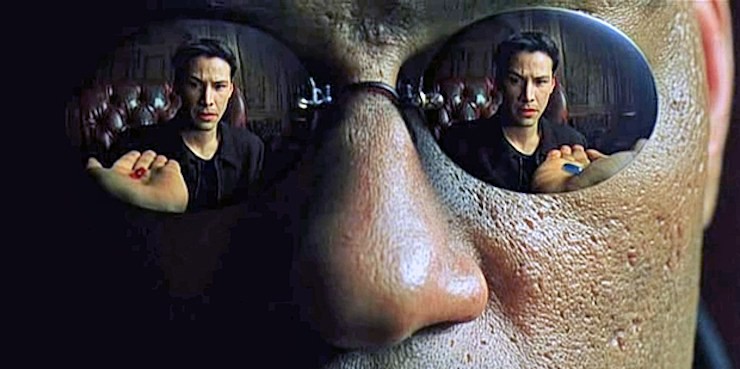Does cyberpunk have it’s own sense of fashion? What defines it? Most genres and sub genres come with vague rules about how their characters must dress—fantasy has a lot of tunics and laces and leather, sci-fi has a lot of jumpsuits and metallic tones and… leather. Okay, so clearly everyone likes leather.
But what is cyberpunk fashion all about?
We get a helpful hand in this query with the name all by itself. Cyberpunk. Punk is a term often associated with fashion, and its core tenets revolve around a patchwork, recycled, DIY feel. Punk is generally rendered in dark colors, lots of leather (again), items that are worn until they’re full of holes—or until they’ve had holes ripped into them. Punk is not meant to be commodified, something that you can buy in a store. You have to make it, or at least assemble it yourself. It’s retro or vintage, but in a lean, grungy way. Even trying to put it into words is antithetical to the movement. Punk isn’t about identification markers so much as flipping the bird to an establishment obsessed with those markers.
But what can you layer on top to make it cyberpunk? Observation can offer the vaguest of definitions; a place where punk, noir, and future technology meet. Somewhere in the middle of all that is cyberpunk. Practically all visual iterations of cyberpunk contain at least two of these elements. So who’s to blame?
William Gibson is typically cited as the godfather of cyberpunk, and the Sprawl trilogy features an array of characters who live on societal fringes, often by choice. In a reality where so much information can be gleaned and manipulated in cyberspace, individuals who are more comfortable with that technology can attain power by being immersed in that world. But that brand power is mainly the black market sort, forbidden or illegal in nature, revolving around hackers and mercenaries. If you’re not employed by a god-like corporation, chances are you’re living a subterranean existence, out of sight and hopefully out of mind. Gibson’s characters often have a low-maintenance grunge-sheen, like Case in his black jeans and tees. Plenty of the character interface with technology on a physical level through modifications; Molly Millions has her bladed nails and mirror shades and Ratz has a robotic arm. (The concept art below comes from Nathan Anderson; it’s part of an excellent senior thesis pitch package for Neuromancer that everyone should check out.)
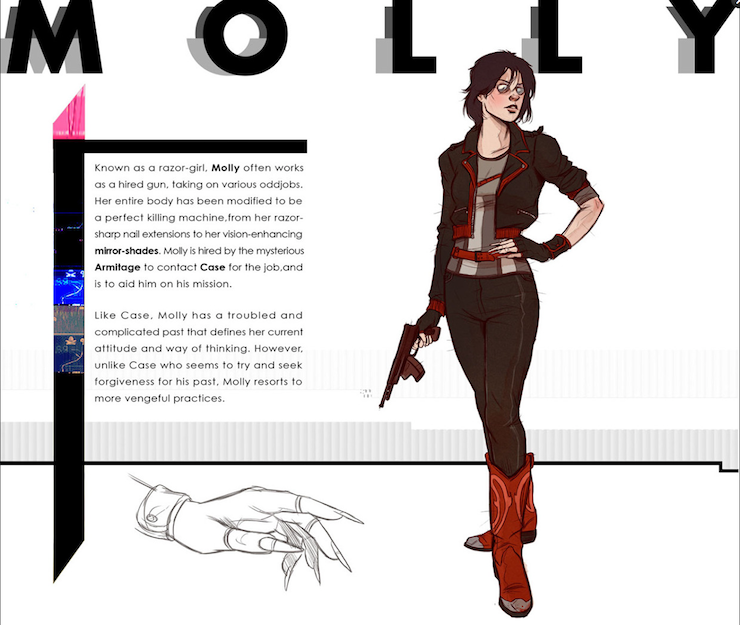
The noir aspect of cyberpunk fashion plays out more often in the visual realm, and this likely has its roots in Blade Runner. The film is a gorgeous barrage of noir fashion and sensibilities, from the trenchcoats and smoke to the dark alleyways and pencil skirt suits. The punk elements of this world are largely confined to Roy Batty’s crew, the renegade androids, there in mesh and jumpsuits and collars and bleached hair.
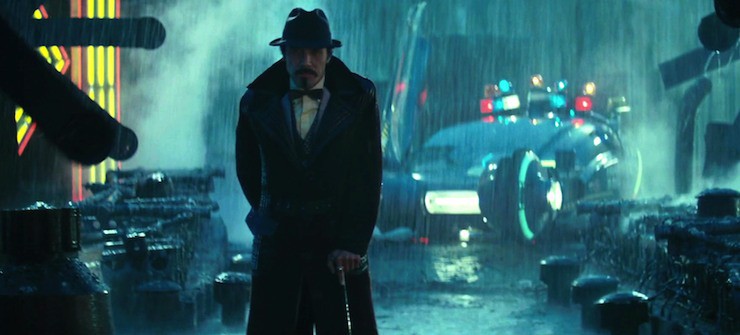
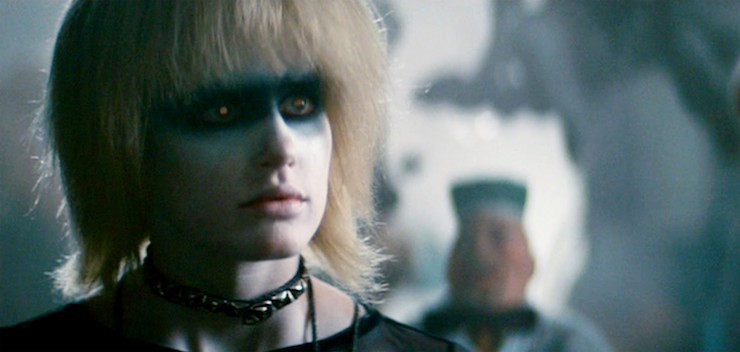
Of course, not every part of cyberpunk is sleek and stylish. Both Tron and RoboCop show the areas where cyberpunk can get a little clunky, more robotic. Both of them play with a retrofuture vibe that relies on bulky frames, circuitry, chrome. Tron Legacy updated the look, rendering it more in keeping with the common cyberpunk aesthetic—everything is sleeker and black, glossy and covered in slim lights. Interestingly (or perhaps oddly) enough, the reboot of RoboCop gave the protagonist a similar upgrade. Since cinema has largely done away with retrofuture trappings, that’s likely the cause.
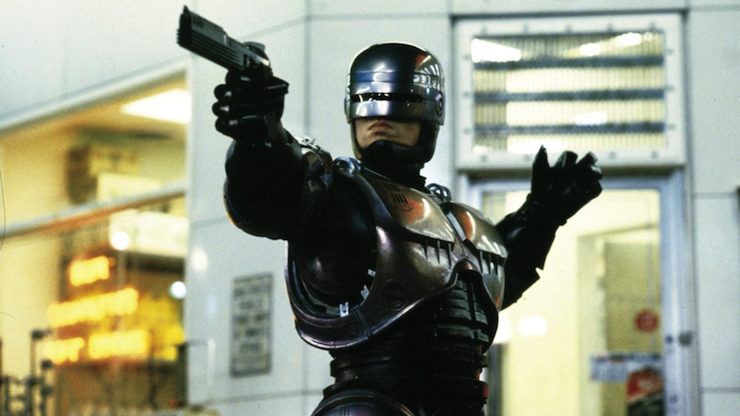
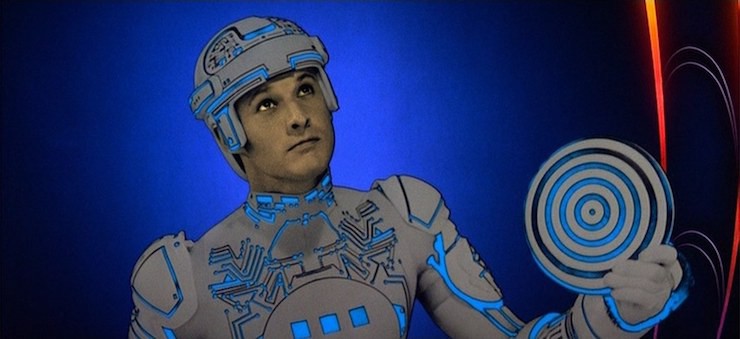
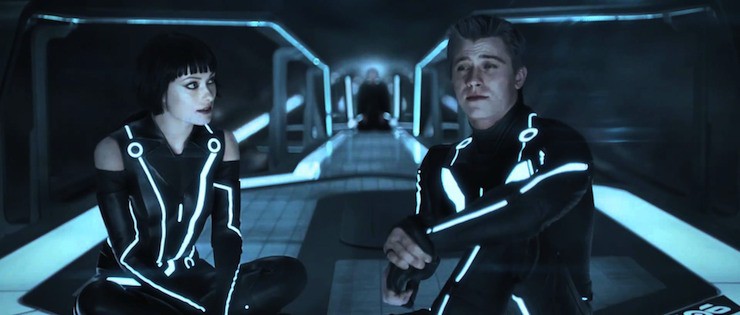
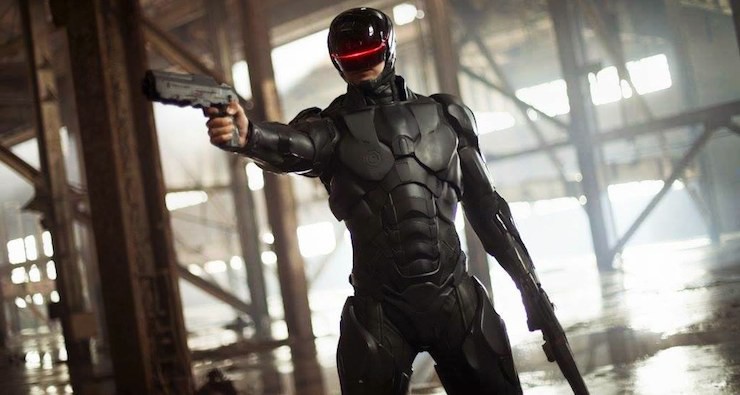
Ghost in the Shell plays with all the standard punk and body modification themes that cyberpunk brings to the fore. Motoko Kusanagi is fond of black jackets, jumpsuits, and purple hair, and Batou has modified eyes. Of course, the story goes further than mere aesthetic, with Motoko’s full body cyborg prothesis, and transition to new bodies over the course of the story.
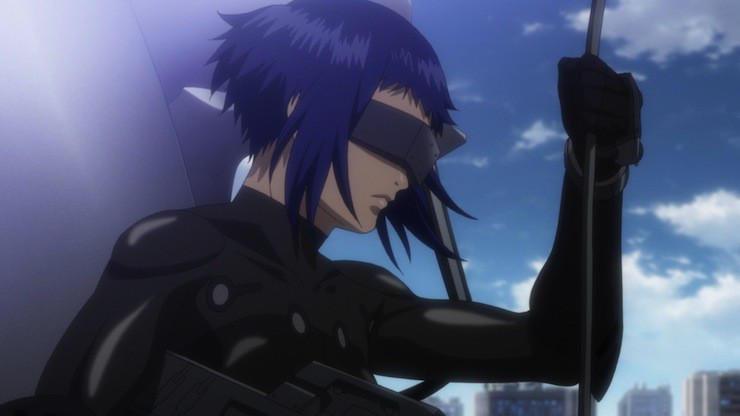
Set in present day, which limited its visual vocabulary, Hackers aspired to that ‘what are the kids wearing?’ look, and pulled it off beautifully. In fact, there’s an article over on Dazed that discusses Hackers’s contribution to cyberpunk fashion, describing the characters’ wardrobes as inspiring “anything still going at Camden Market.” We’ve got plenty of latex and cool jackets and ripped hems all over the place. Strange Days had a more contemporary flare as well with Ralph Fiennes terrible suits, but all eyes are on Juliette Lewis’ chainmail dress. (There is a chainmail dress in Johnny Mnemonic too, so perhaps we could call that a trend? An odd trend?)

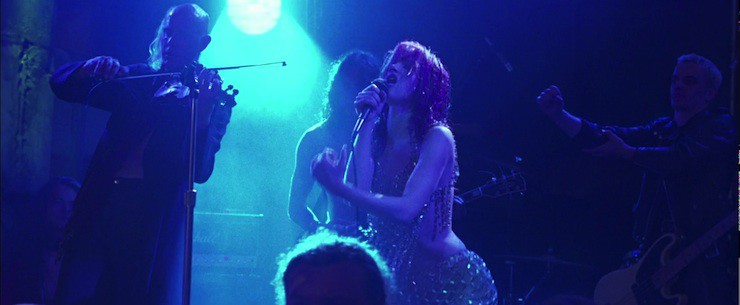
Mixing the noir, the punk, and the cybernetic all together gives us The Matrix, which fills the screen with trenchcoats and PVC skintight body suits. Morpheus’s mirror shades aren’t body upgrades like Molly’s in Neuromancer, but they work as a great homage. What’s fascinating is that the costume designer for the film had a very tight budget, and admitted making the clothes out of the cheapest materials she could find—Neo’s coat fabric only cost three of four dollars a yard. There’s something extra authentic about it, knowing that even when these characters look sleek, they’re still essentially dressed from the bargain bin. And, of course, everyone in this world has body alteration and modification going for them, living their lives plugged into cocoons, and jacking into the Matrix whenever they need to interface with it.
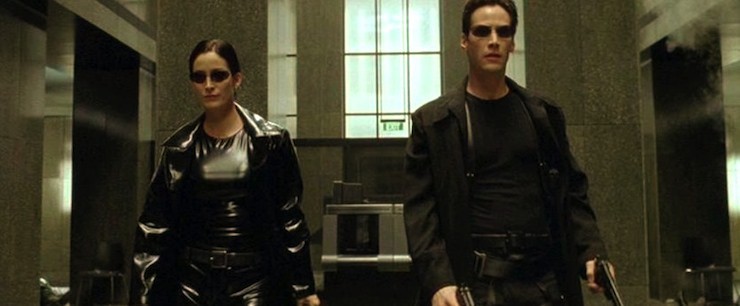
In Malka Older’s Informocracy, inspiration from current technology leads to some new possibilities in the fashion world. Dresses can be bought and then materialized via 3D printer, rather than needing to find a shop with your size available. There’s also mention of “blood glitter” being used by the super-rich, which is capable of highlighting veins under the skin. Genetic modification takes the place of hair dying, and wouldn’t that make the process of going from brunette to pink that much easier?
There’s more, always more to explore within cyberpunk’s very specific fashion sensibilities, but the real point is this: no matter how you express your cyberpunk self, you’re almost always guaranteed to look effortlessly cool. Go forth and in leather and metal, my friends.
Emmet Asher-Perrin really wants the ability to genetically modify her hair teal. You can bug her on Twitter and Tumblr, and read more of her work here and elsewhere.










